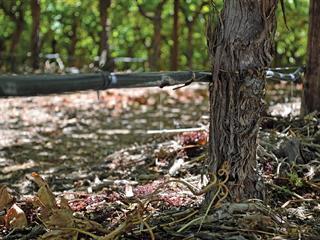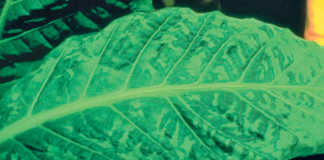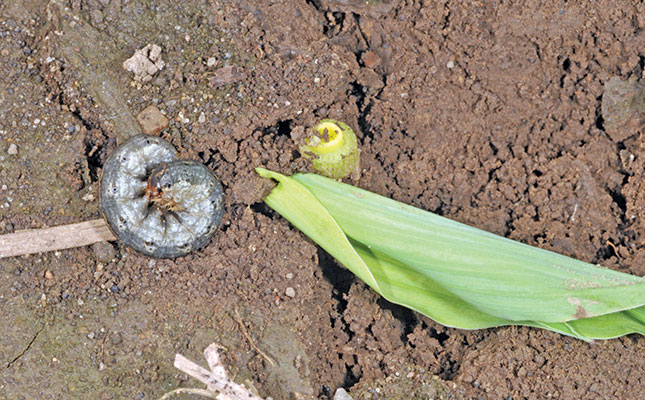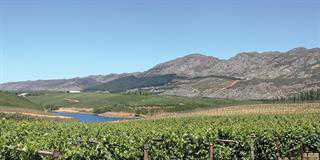
With the mercury above 40°C on most harvesting days in summer along the Lower Orange River, farmers here need to use their most valuable resource – water – very carefully indeed. Stefaans Zaaiman has to manage his irrigation systems particularly well, as his 132ha vineyard farm Ebenaeser outside Kakamas differs markedly in topography and geology to most others in the area.
Irrigation options
Stefaans’s farm, planted to vineyards for the production of table grapes and raisins, stretches from the loamy and alluvial banks of the Orange River to the more granite-like higher grounds. Stefaans cultivates raisin cultivars, notably Sultana (Thompson Seedless) and Merbein on the so-called binnegrond of the valley, the land between the irrigation canals and the river, which almost matches the river’s floodplain.
“We prefer flood irrigation on the floodplain because we get proper water distribution,” he says, adding that when the soil dries out, optimal oxygen penetration takes place. Above the canal on the outlying land, Stefaans uses drip irrigation. Because the hilly terrain is uneven, micro-irrigation would result in run-off and wasted water. “Luckily, the outlying land isn’t sandy. If it was, we’d be forced to apply more water and do it through micro irrigation,” says Stefaans.
Choosing drip irrigation on the hilly vineyards reduces labour costs as he needs fewer staff to check the pipes. Micro-irrigation demands more manpower as the application sprayers are delicate and require regular cleaning, he says. Another benefit of drip irrigation is that pre-harvest preparation, such as the trimming of table grape bunches and cutting out bad pellets, can be caried out even as water is applied to vineyards.

Stefaans Zaaiman (Photo courtesy of Zandri Zaaiman)
Pre-harvest preparation starts in early October when the valley’s maximum temperatures can already reach 40°C during the day. Thanks to the intensive irrigation regime, no hours are lost due to staff working in the vineyards. Stefaans applies water to his outlying lands in three cycles of 80 minutes per day – two during the day and one at night.
Saving water and electricity
Stefaans irrigates at night to avoid Eskom’s higher electricity tariffs charged during the peak consumption period from 6pm to 9pm. Irrigating at night also leaves his vineyards with a bank of moisture at root level when the temperature increases rapidly after daybreak. The moisture keeps the roots cool for optimal production.
In total, Stefaans applies 54mm of full area irrigation per week. This compares well with the region’s annual rainfall of between 50mm and 100mm per year. Most of his early-ripening table grape cultivars, such as Prime Seedless, Early Sweet and Flame Seedless, have increased water requirements from early October. This is when the farm switches to its three-cycle-per-day water application.
From January, typically after the harvest, cell division in the vines increases with carbohydrate production taking place. The trees’ water needs are at their highest at this time as they are nurturing the next season’s crop. “A small mistake during this time can lead to huge damage in the next season. We farm with leaves during the latter part of the summer,” says Stefaans.
Through photosynthesis, the leaves continue to produce carbohydrates, which are stored in the roots. “The leaves are the factory of next year’s harvest,” he says.
During the milder winter months, the farm adjusts its water application down to two cycles of 80 minutes per week. Stefaans does not allow the shallow hair roots of the vines to dry out, however, as this weakens their ability to absorb nutrients that are
important for the following harvest. Maintenance is carried out in winter due to the reduced water cycles. This includes checking and cleaning application holes, testing pressure in the lines, and removing algae.
Stefaans is flexible and adjusts the amount of water applied as the weather dictates. During heat waves where the temperatures can exceed 50°C, he irrigates more. “A single water stress episode in a vineyard can harm a whole harvest,” he concludes.
Email Stefaans Zaaiman at [email protected].













